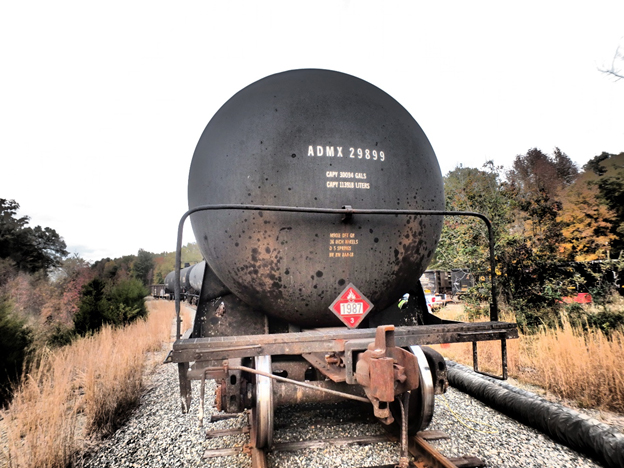NTSB news release 3/24/20
Undetected Cracks in Tank Car led to Ethanol Release in Virginia Rail Yard
WASHINGTON (March 24, 2020) — The National Transportation Safety Board determined Tuesday an Archer Daniels Midland Company rail tank car, while stationed at a CSX rail yard in Fredericksburg, Virginia, released denatured ethanol from undetected cracks in the bottom of the tank car shell.
About 68 gallons of the denatured ethanol, a flammable hazardous material, leaked from the DOT 111 rail tank car. The leaking rail tank car, which was loaded with more than 28,690 gallons of denatured ethanol, was the sixth car of a train, that consisted of a buffer car loaded with steel and seven rail tank cars, all fully loaded with denatured ethanol. Other rail traffic on adjacent main tracks was significantly slowed because of the release causing passenger train delays during peak traffic hours. The incident location was bordered by commercial businesses and residential neighborhoods. No injuries were reported in connection to the release.
In its report issued Tuesday, the NTSB noted the undetected cracks resulted from overspeed, high-energy coupling events. These events caused tank shell buckling which led to the premature fatigue cracking at the inboard end of the cradle pad.
(In this photo taken on Nov. 3, 2016, the incident tank car is seen stationed on a siding at the incident site in Fredericksburg, Virginia, where ethanol was found leaking from the tank car. NTSB photo)
“This incident could have been mitigated if federal regulations were in place to limit high-energy coupling events that have the potential for causing damage to tank car structures that can lead to hazardous materials releases in transportation,” said NTSB Chairman Robert L. Sumwalt. “I strongly urge regulatory agencies to swiftly implement the recommendations issued today to prevent a potentially catastrophic event.”
The NTSB issued four new safety recommendations to the Federal Railroad Administration and the Pipeline and Hazardous Materials Safety Administration based on the findings of its investigation. These recommendations address safety issues including the need for maximum coupling speed and impact force thresholds, the need for qualified inspection and repair following high-energy coupling events and methods to detect and report excessive, coupling-speed impact events.
An abstract of the final report, which includes the findings, probable cause, and all safety recommendations, is available at https://go.usa.gov/xdSVk.
A link to the accident docket is available at https://go.usa.gov/xdSHW.













